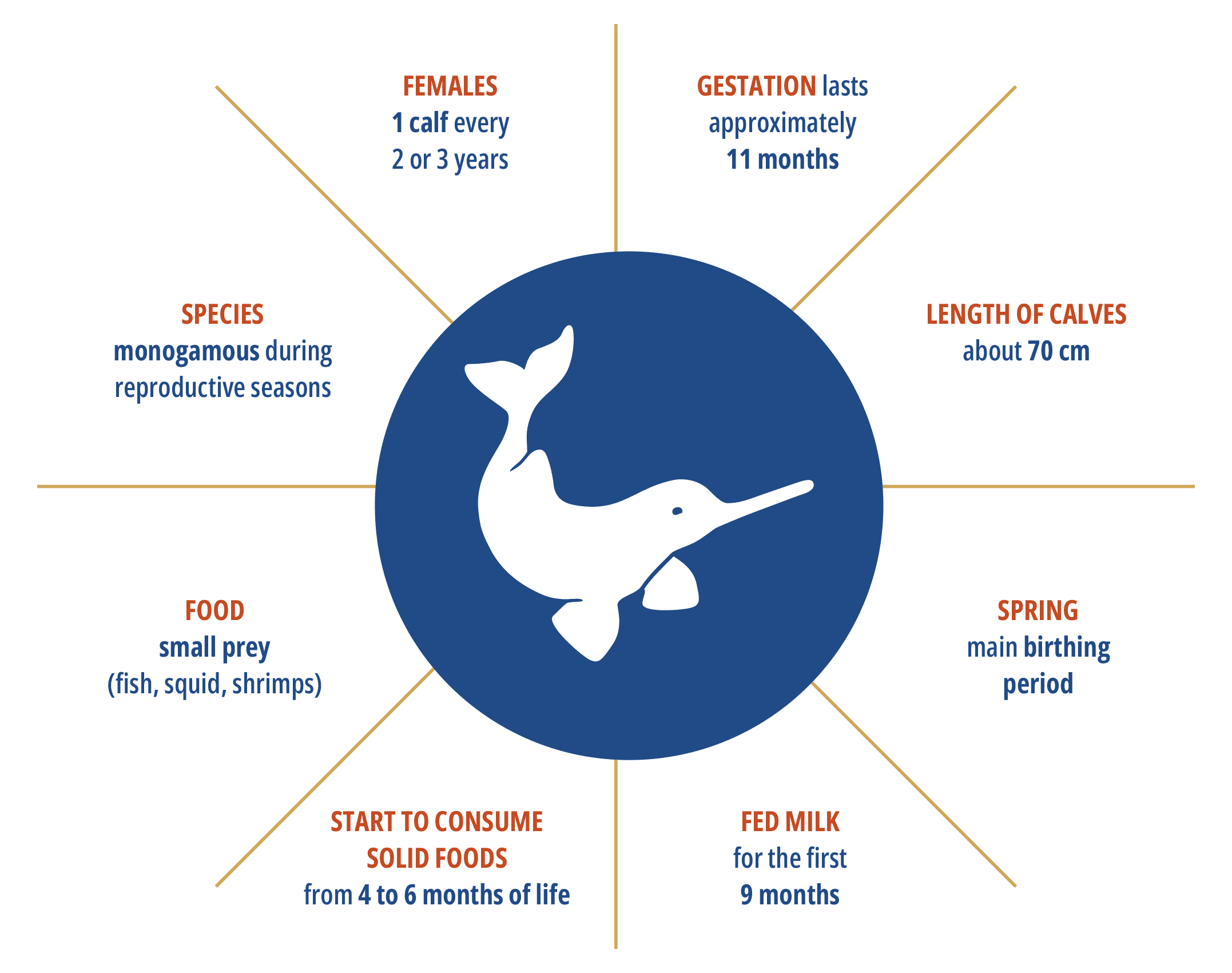REPRODUCTION AND FEEDING ECOLOGY
Females have only one calf every two years. Gestation lasts approximately 11 months. The main birthing period is in the spring, but calves can be seen year-round in some regions. The maximum age registered for the species is 23 years.
Based on the results of several studies involving genetic analyses of the morphology of the reproductive organs and movement patterns, it is believed that franciscanas are monogamous. That means they form stable couples during at least one reproductive season. They also live in family groups. At birth, calves are 65 to 70 cm in length and are fed milk until about six months of life, but they start to consume other foods from four months onwards. As they grow up, they learn from their mothers to catch fish and squid, the main food sources in adult life.
In general, the franciscana eats small prey, of about 10 centimeters in length. It feeds on the most abundant species of fish and squid in each of its region of occurrence. In Babitonga Bay, its main food sources are small fish such as the rake stardrum (Stellifer rastrifer), the canguanguá (Stellifer brasiliensis), and the sardine (Pellona harroweri), as well as squids (Lolliguncula brevis).
highlights

See too:
- Franciscana
- Where they live
- Reproduction and feeding ecology
- Morphological Features
- Threats
- Bioacoustics and behavior



